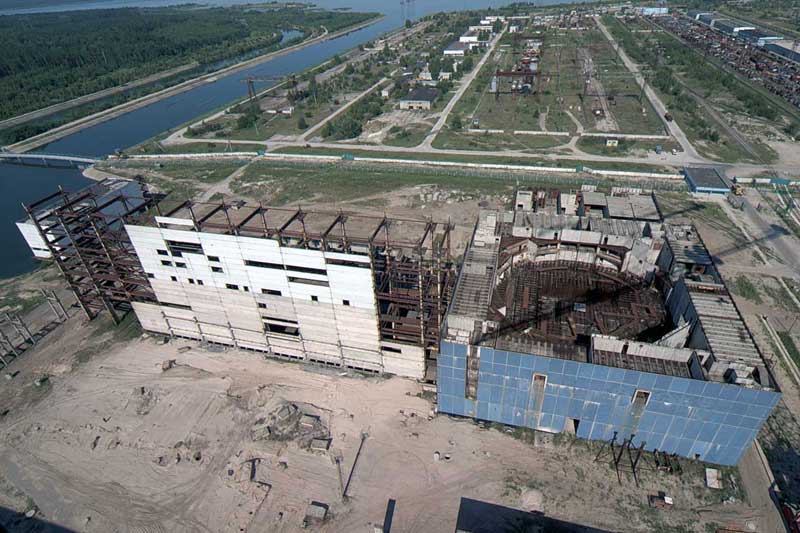Russia continues to attack the territory of Ukraine and engage in nuclear threats. Constant shelling and the recent terrorist attack at Kakhovka HPP threaten the operation of Europe’s largest nuclear power plant (NPP), Zaporizhzhya NPP.
In such circumstances, making decisions that do not pose an additional threat to human life and the environment is essential. Energy Minister Herman Galushchenko recently announced Ukraine’s intention to buy two nuclear reactors and power equipment from Bulgaria’s Belene NPP. The Russian-made reactors will be installed at the unfinished third and fourth Khmelnytsky Nuclear Power Plant (KhNPP) units.
What are the consequences of this decision?
Background
The construction of KhNPP units began in 1985 and 1986 and was halted in 1990 due to a moratorium on the construction of new units after the Chernobyl accident. The third unit is 75% complete, and the fourth is 28% complete. The constructed structures were not properly preserved, so they were constantly exposed to external influences, including weather events. This led to mechanical damage and corrosion of metal elements of reinforced concrete structures. Rusting and cracks in the concrete were recorded during the 2006-2007 survey by the Kyiv Research and Design Institute KIEP representatives.

What is the problem
In 2012, the State Research Institute of Building Structures stated that the structures could be used only after repair and construction work. And in 2016, the Ministry of Energy and Coal Industry of Ukraine demanded an additional examination of their durability. As of today, it is not known whether other inspections of the suitability of unfinished units have been conducted.
The purchase of Russian-made reactors will cost Ukraine at least 600 million euros. The Ecoclub doubts the safety of structures that have been in the open air for more than 30 years. They also have doubts about the service life, which may be shorter than expected due to the low reliability of the structures. It is even more challenging to predict the functioning of these units in emergency conditions.
“Before making a deal, it is necessary to conduct thorough research into the existing condition of building structures. It is also worth considering the possibility of implementing modern safety measures. The project for constructing the units was developed about 50 years ago, so the placement of the reactors may create new threats to the region’s security. Investing in developing decentralized green energy is more efficient and safer than trying to revive old Soviet projects,” says Olha Lyashchuk, project coordinator of the Ecoclub
Photo: State Scientific and Technical Center for Nuclear and Radiation Safety
The article was published within the framework of the Ecofeminism project and “Enhancing the Institutional Capacity of the Ecoclub in the Light of Post-War Reconstruction and EU Candidate Status” within the framework of the Initiative for the Development of Environmental Policy and Advocacy in Ukraine, implemented by the International Renaissance Foundation with the financial support of Sweden. Opinions, conclusions, or recommendations are those of the authors of this document and do not necessarily reflect the views of the Government of Sweden. The content of this document is the sole responsibility of the NGO “Ecoclub”.











